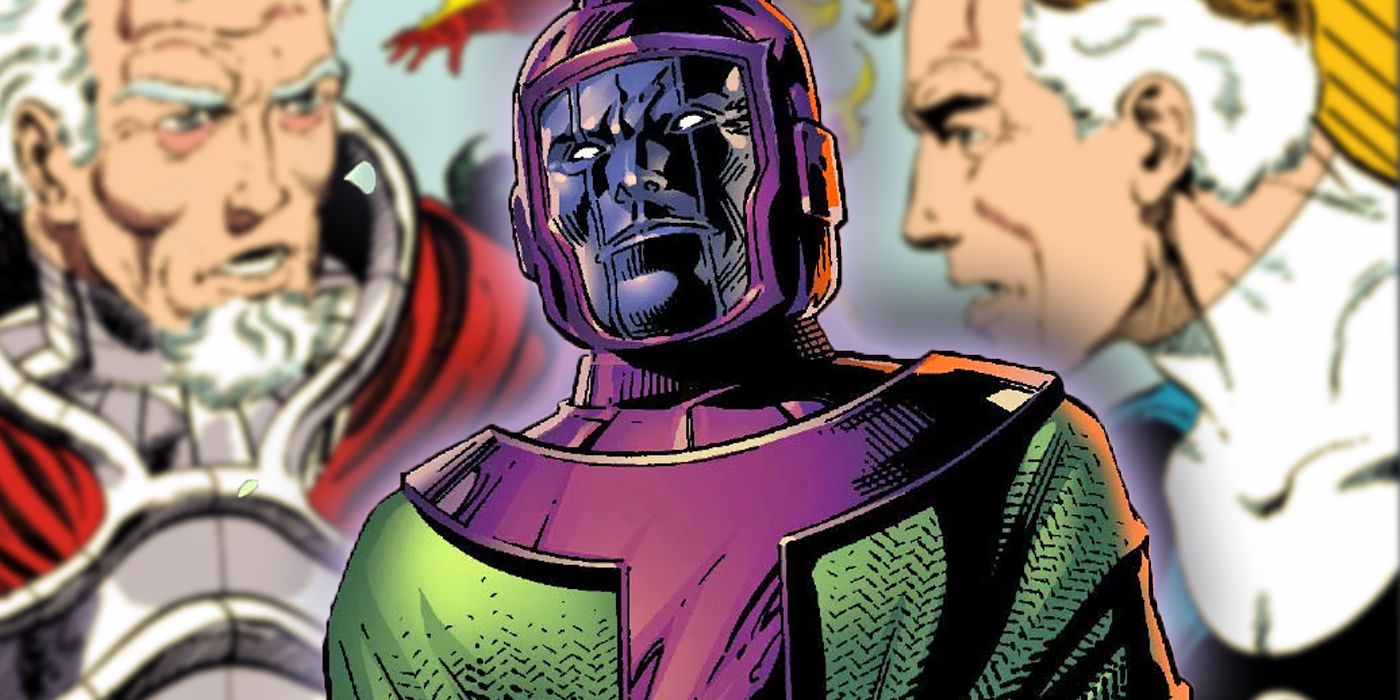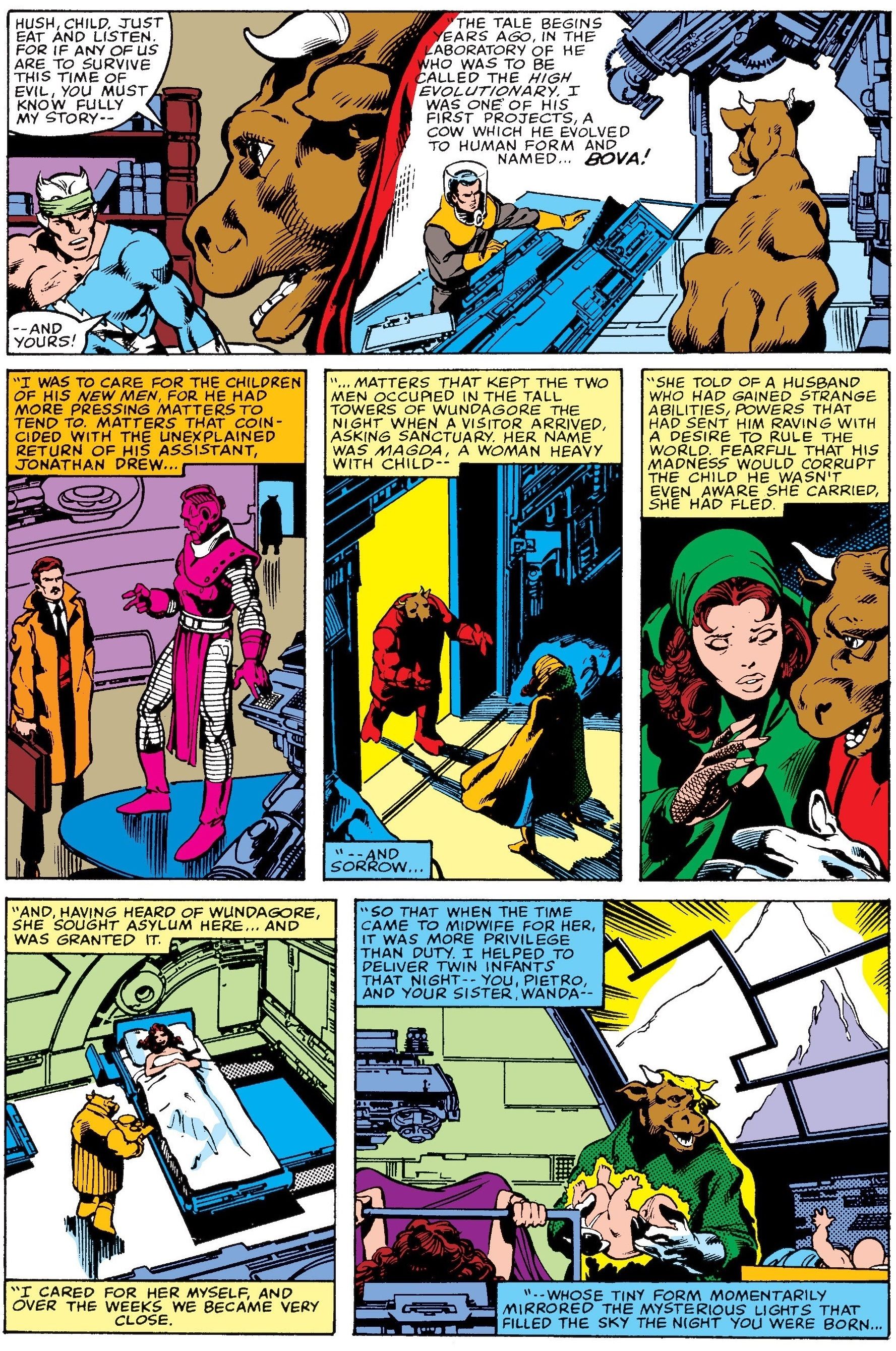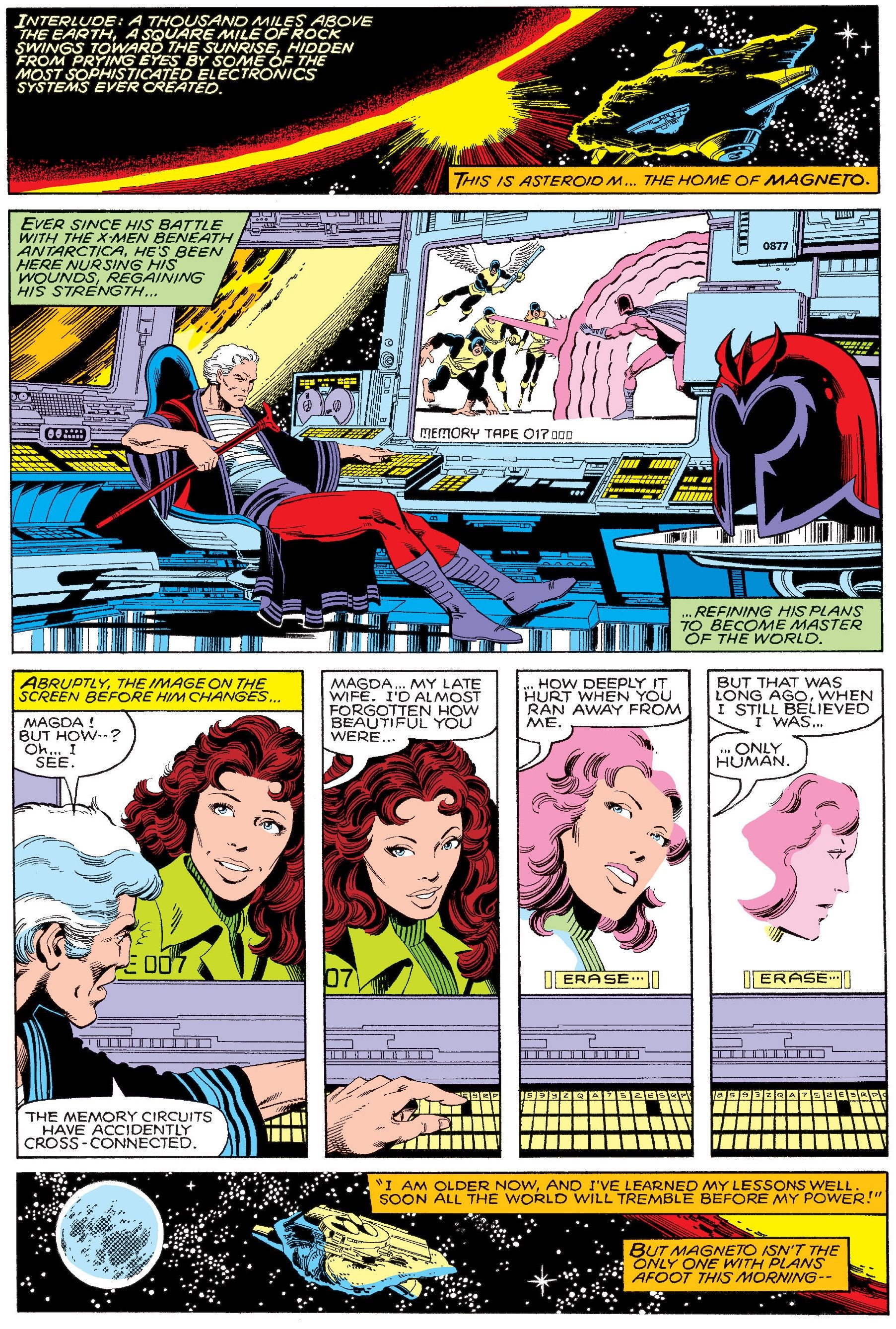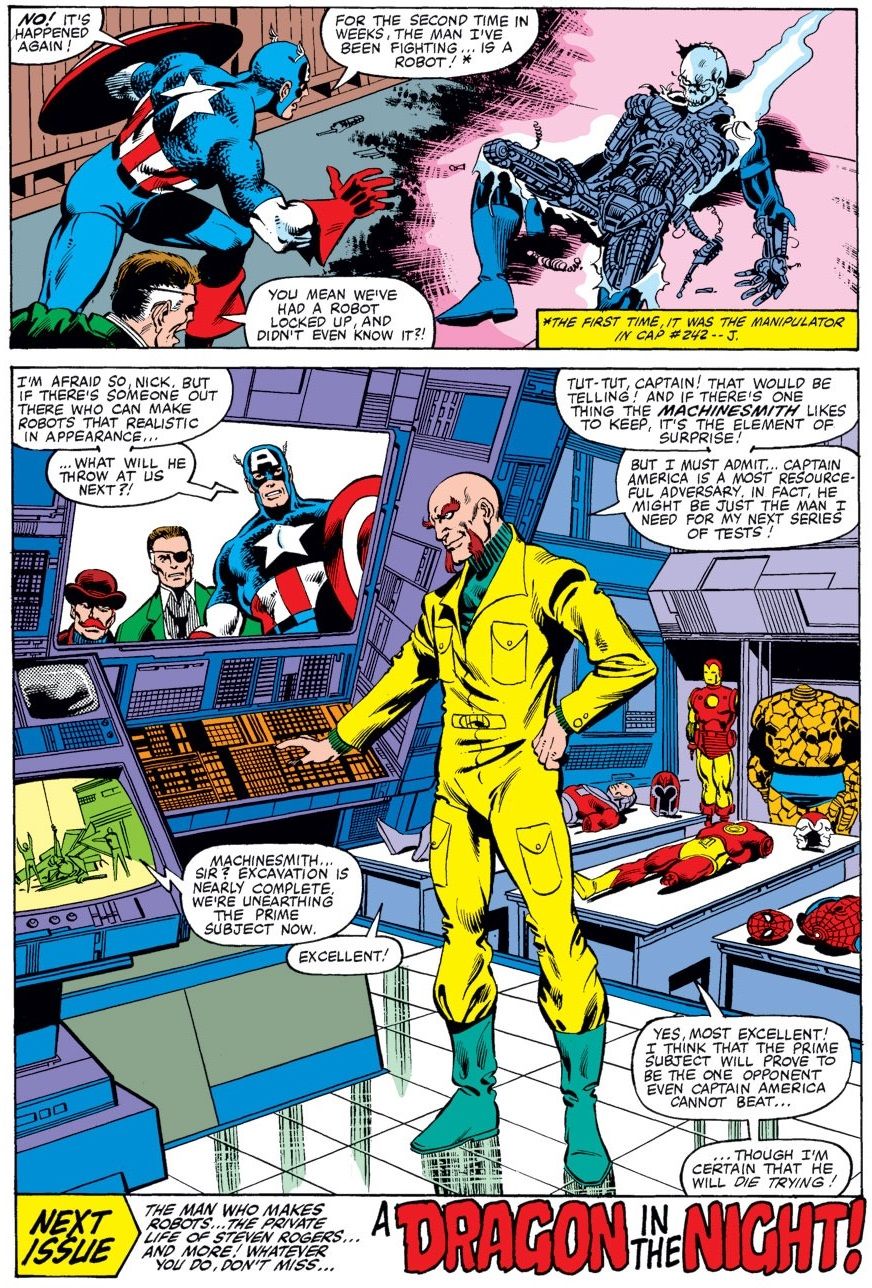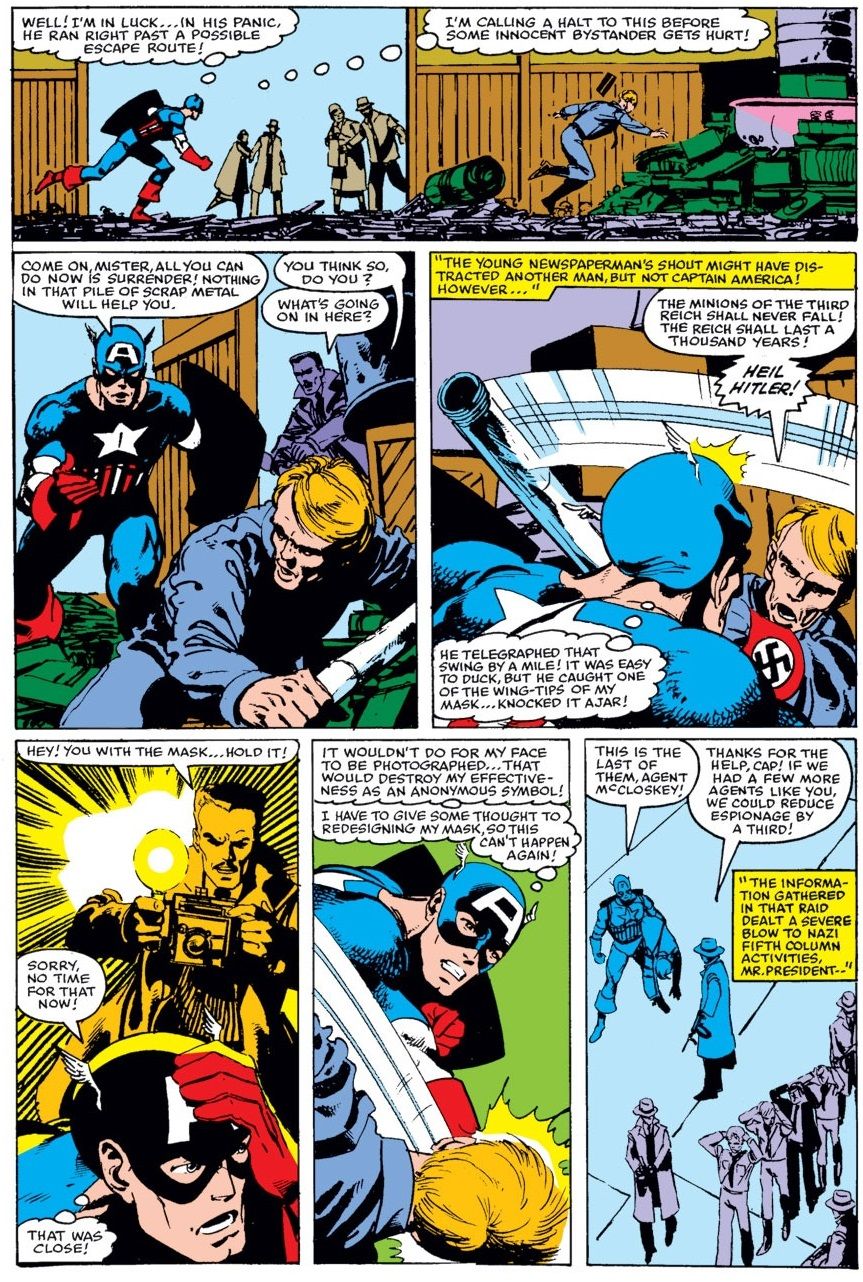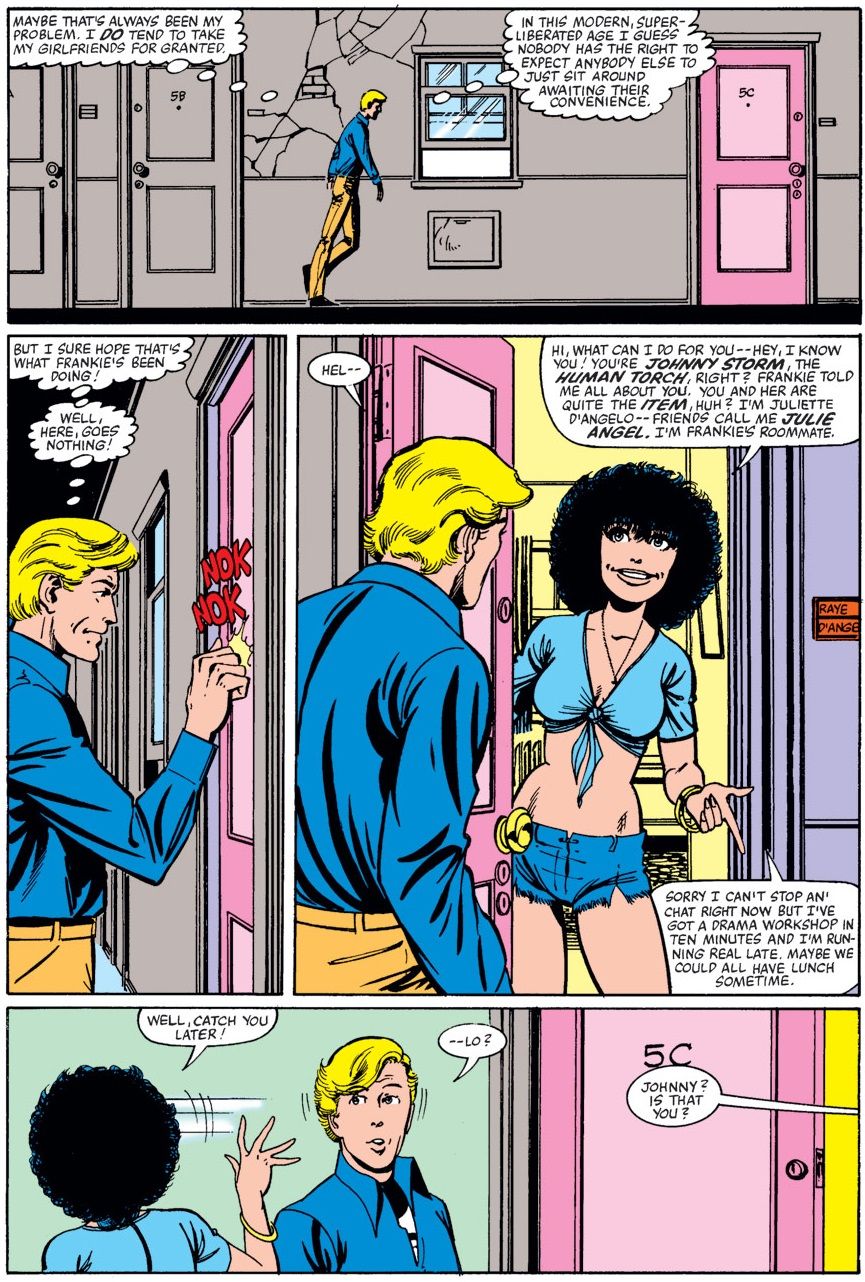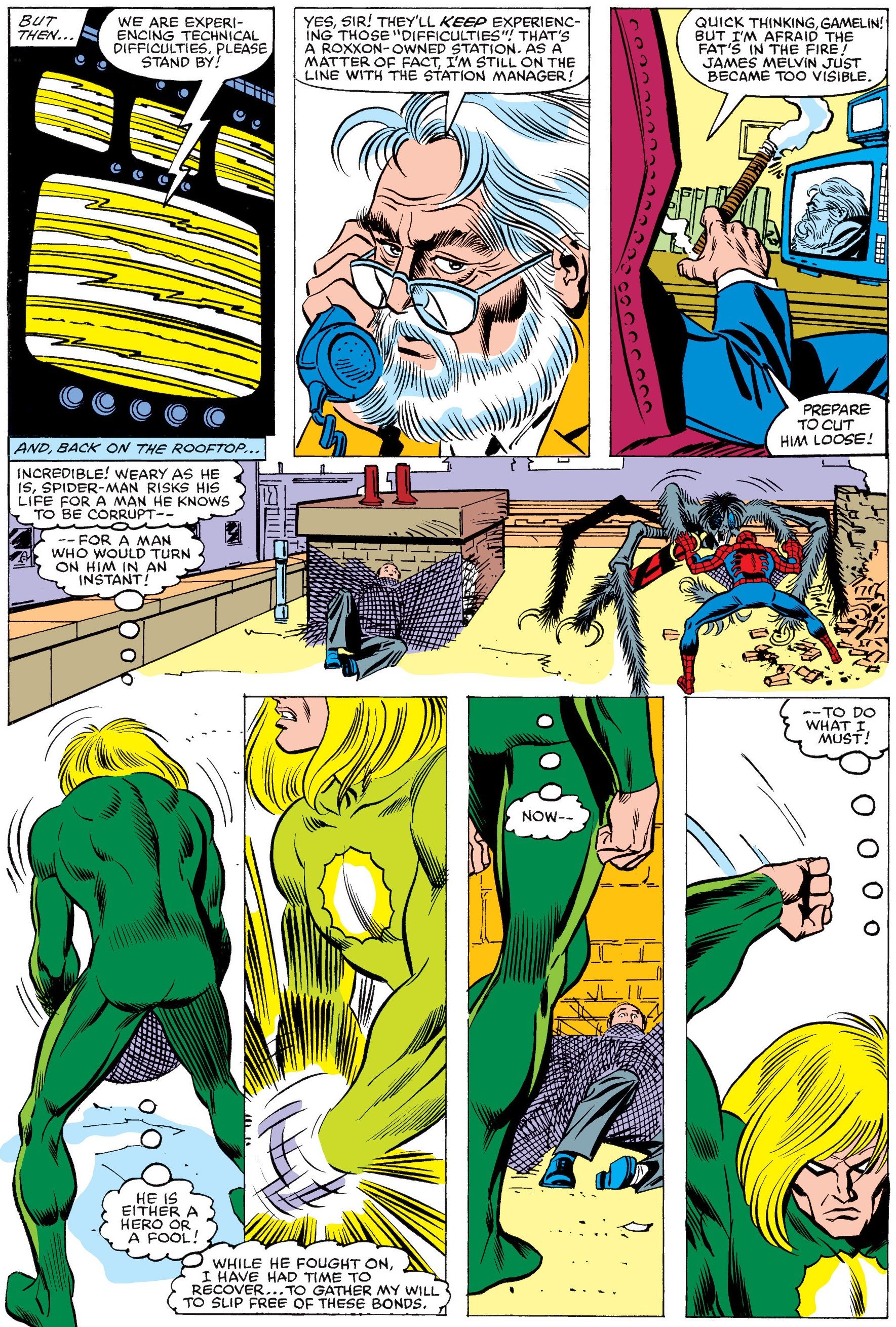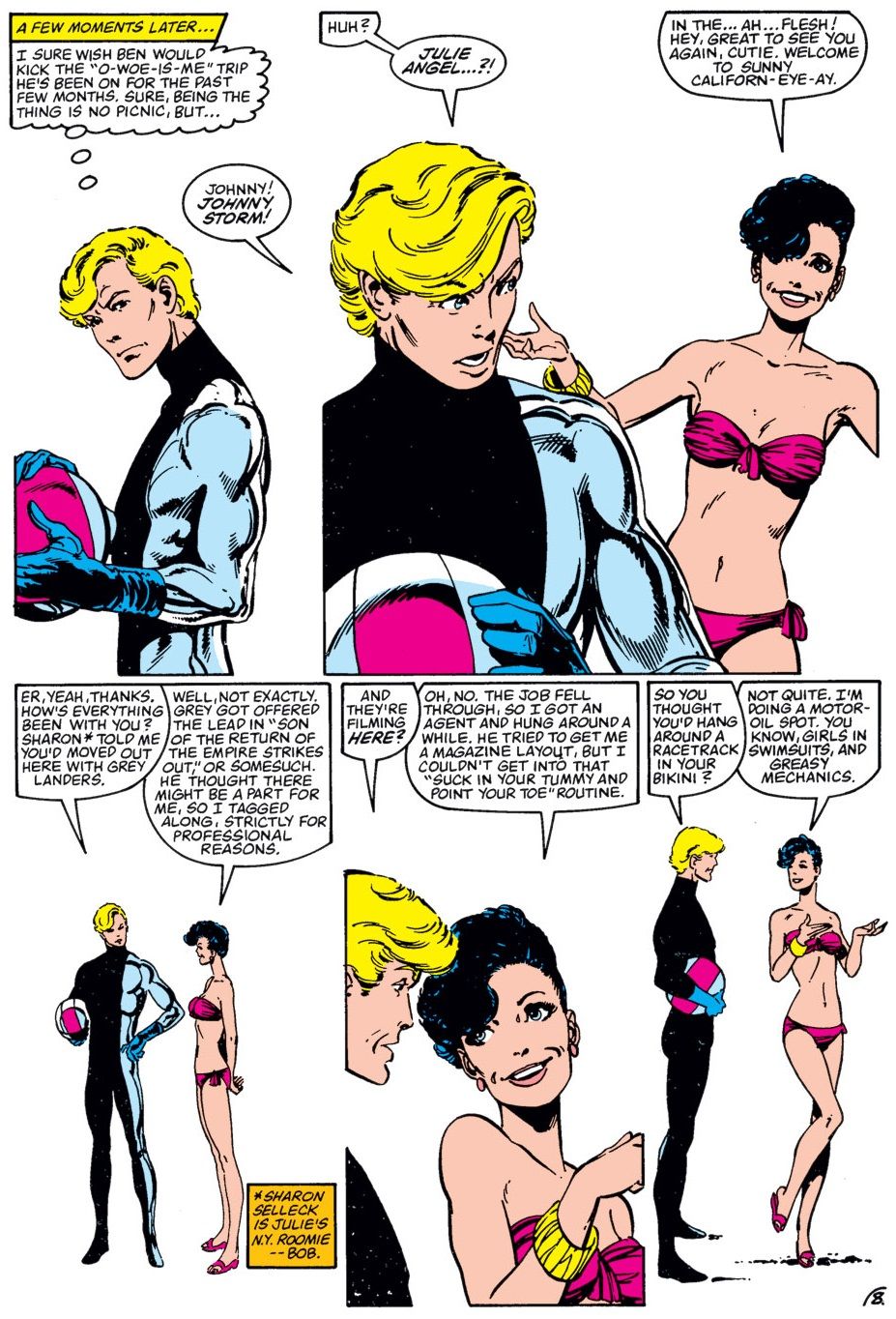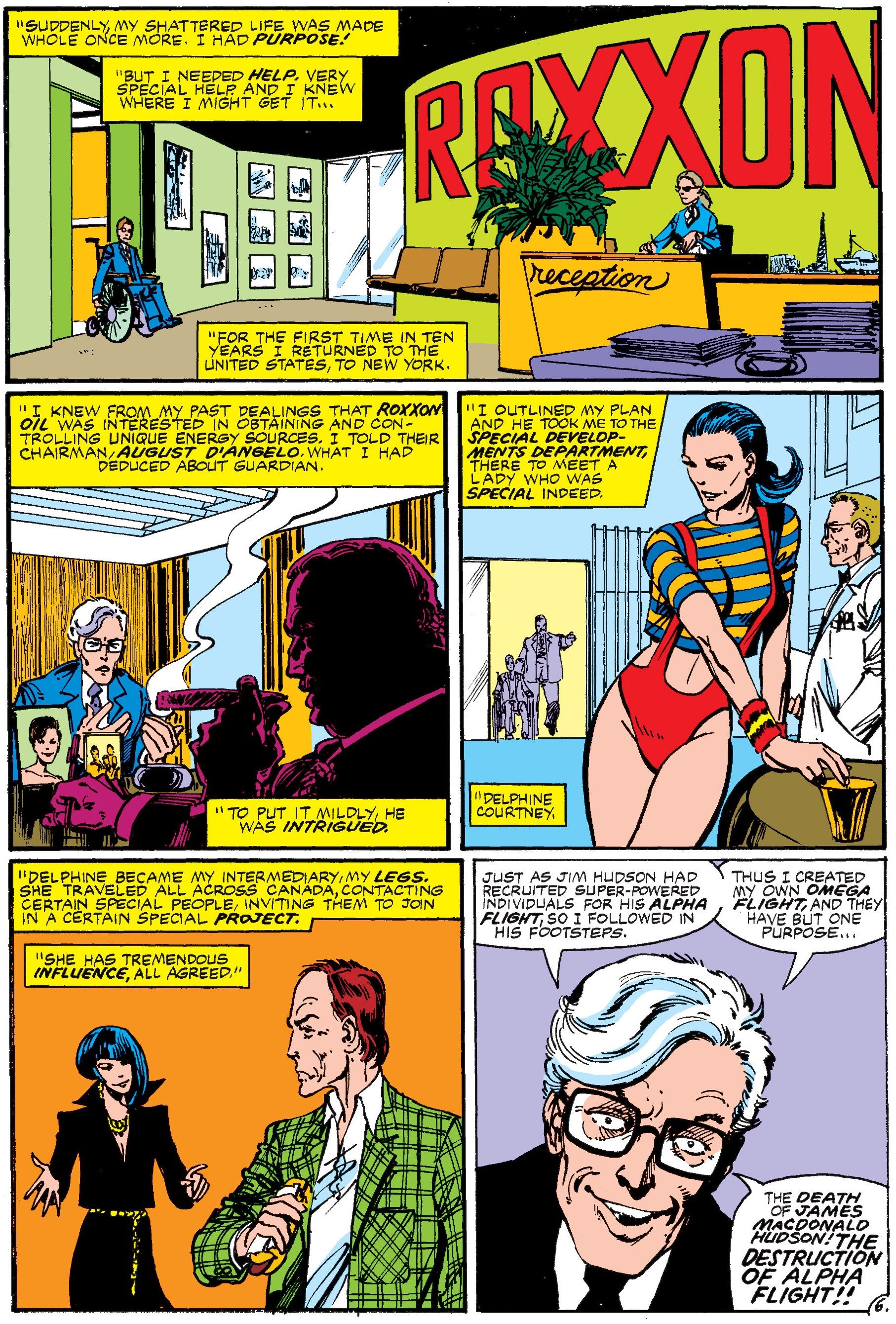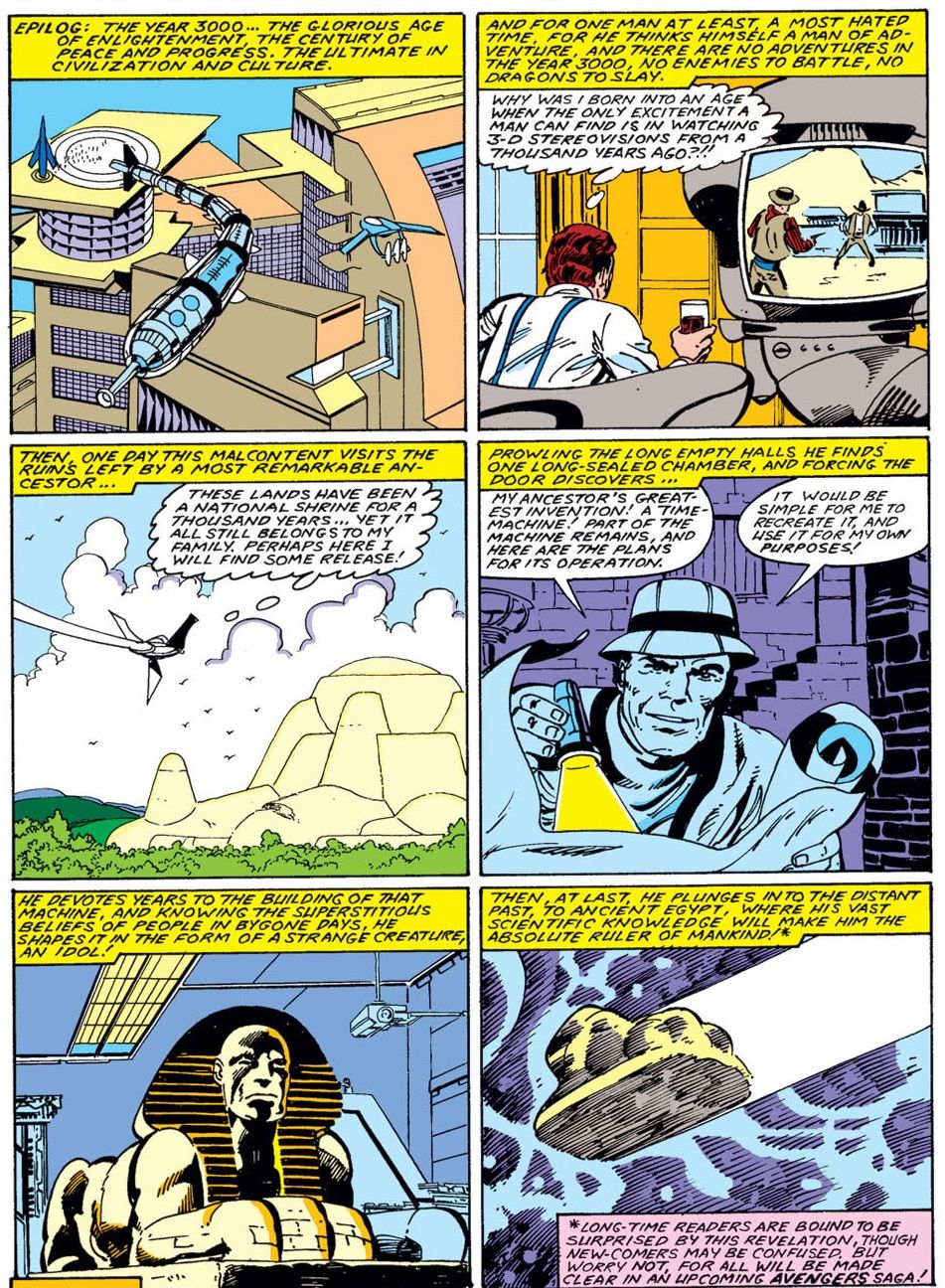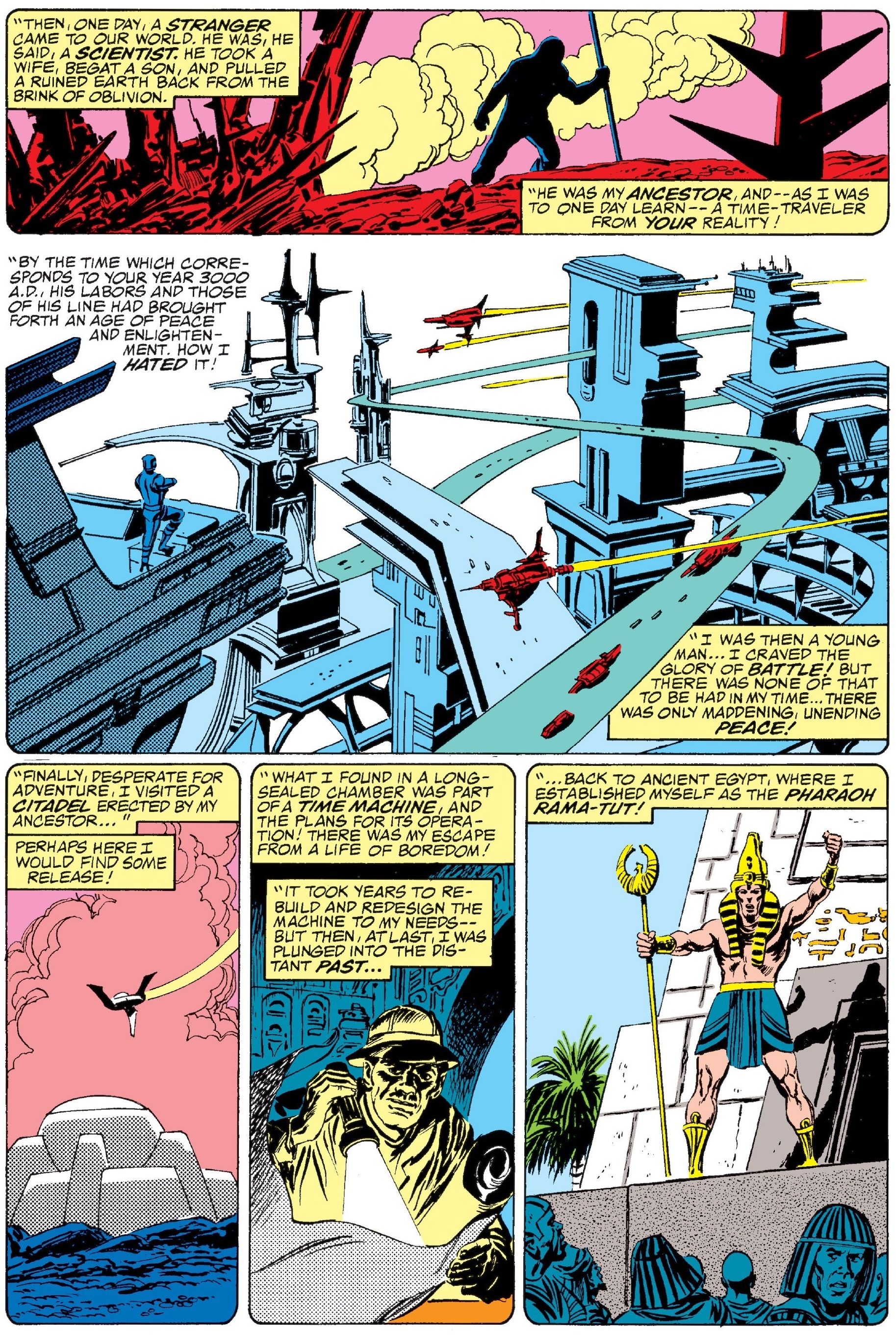Today, we look at how John Byrne and Roger Stern tried to develop an almost "secret" history of Marvel Comics through subtle revelations in their work.
In Drawing Crazy Patterns, I spotlight at least five scenes/moments from within comic book stories that fit under a specific theme (basically, stuff that happens frequently in comics). Note that these lists are inherently not exhaustive. They are a list of five examples (occasionally I'll be nice and toss in a sixth). So no instance is "missing" if it is not listed. It's just not one of the five examples that I chose.
John Byrne and Roger Stern were big fans of the idea of doing subtle revelations that would only make sense for dedicated Marvel readers. You know, like stuff that would only work for you if you read two different books, so as a more dedicated reader, you would get more information than a more casual reader, since the more casual reader would only get a piece of the puzzle of the Marvel Universe, as it were. So it was sort of like a "bonus" for fans to get the full "secret" history of Marvel.
MAGNETO BEING SCARLET WITCH AND QUICKSILVER'S FATHER
The most famous example occurred early on in their careers together, when Roger Stern was an editor at Marvel on Avengers and X-Men. In 1979's Avengers #186 (by Mark Gruenwald, Steven Grant, David Michelinie, John Byrne and Dan Green), we see a flashback to the birth of Scarlet Witch and Quicksilver. We see their mother, Magda, but not their father...
A month later, meanwhile, in X-Men #125 (by John Byrne, Chris Claremont and Terry Austin), we see Magneto's computer system accidentally show him a picture of his late wife...Magda!
Therefore, it must be that the mystery father of Scarlet Witch and Quicksilver from the Avengers issue must be Magneto!
Of course, soon after that, Marvel just made this subtle connection explicit in the Vision and Scarlet Witch miniseries.
MACHINESMITH BEING BEHIND THE MAGNETO ROBOT
At the end of X-Men #50 (written by Arnold Drake and drawn by the legendary Jim Steranko, with inks by veteran comic book artist John Tartaglione), we discover Magneto, who is working with the new villain, Mesmero, is the father of Lorna (who is now known as Polaris)! By the end of that story, though, Iceman has convinced Polaris that Magneto is NOT her dad. In X-Men #58, Roy Thomas, Neal Adams and Tom Palmer quickly write off the Mesmero/Magneto team-up in by having it be revealed that the Magneto in that story was a robot. However, they never explained who was behind the robot.
In Captain America #247 (by Stern, Byrne and Joe Rubinstein), they reveal that the Machinesmith has been making very detailed robots out there and, in the background, is a Magneto robot...
We also learned that Machinesmith built robots for various purposes and this was their implied revelation that it was Machinesmith who built the Magneto robot that claimed to be Polaris' father way back in X-Men #50 (since Magneto DID turn out to be Polaris' actual father, that was a bizarrely good guess by Machinesmith, right?).
J. JONAH JAMESON IN WORLD WAR II?
In Captain America #255, Byrne and Stern (and Joe Rubinstein) showed a reporter who almost discovered Captain America's secret identity....
The implication is that it was J. Jonah Jameson, but obviously they didn't want to explicitly tie Jameson to World War II, so they didn't say his name outright. J. Jonah Jameson's ties to World War II were a confusing one in terms of Marvel history. When Kurt Busiek and Alex Ross wanted to use Jameson in their series, Marvels, in a story set during World War II, the Spider-Man office denied the use of Jameson, so Busiek and Ross had to do a similar thing to Byrne and Stern and just have a character who looks and acts awfully a lot like Jameson without officially being Jameson.
JULIE ANGEL'S VILLAINOUS FATHER
In Fantastic Four #237 (by John Byrne), Johnny Storm met Franke Raye's roommate, Julie D'Angelo, who went by the name Julie Angel...
Soon after that, in Amazing Spider-Man #236 (by Roger Stern, John Romita Jr. and Frank Giacoia), we meet the head of Roxxon, the evil conglomerate who are at the center of a number of Marvel comic book stories, August D'Angelo (we don't see him, though, and we only hear his last name mentioned in this story)...
In Fantastic Four #263, Johnny runs into Julie, who has a new hair style...
And then, in Alpha Flight #12, Byrne shows us August D'Angelo, and on his desk is a photo of Julie...
The implication, of course, is that they are father and daughter, but it is never said outright. This is a really weird one, since D'Angelo was never really used again, despite Roxxon being used frequently in the years since.
KANG'S CONNECTION TO NATHANIEL RICHARDS
In Fantastic Four #273, Byrne showed us the future of Nathaniel Richards' alternate Earth, and we see one of his descendants got bored of it all and decided to travel back in time to become Rama-Tut. Yep, Kang is from Nathaniel Richards' alternate Earth!
In Avengers #269 of the following year (by Stern, John Buscema and Tom Palmer), Kang repeats the story of how he came from Nathaniel Richards' reality...
This was this precise sort of "crossover" that Byrne and Stern were big fans of, where Marvel writers would introduce concepts without spelling it out, so that careful readers who collected multiple Marvel comic books would understand what was going on before the characters in the comics would even know. So Stern, for instance, is careful not to actually say that Kang's ancestor was Nathaniel Richards, so you would only know it was Richards if you had read the earlier Fantastic Four story. Interesting approach to things.
If you have suggestions for a future Drawing Crazy Patterns, drop me a line at brianc@cbr.com!

